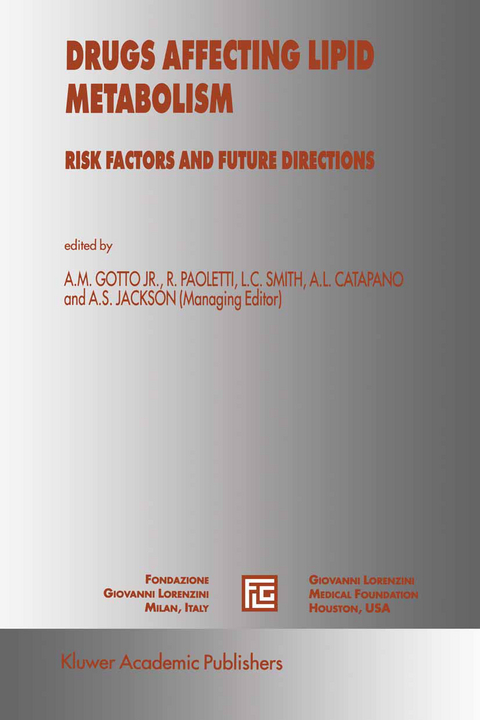
Drugs Affecting Lipid Metabolism
Risks Factors and Future Directions
Seiten
2011
|
Softcover reprint of the original 1st ed. 1996
Springer (Verlag)
978-94-010-6625-9 (ISBN)
Springer (Verlag)
978-94-010-6625-9 (ISBN)
Even a brief scan of the table of contents of the present volume is enough to disclose the diversity of research interests and opinions in the field of lipidology. It is precisely this diversity that is the strength of our field and that was showcased by the XII International Symposium of DRUGS AFFECTING LIPID METABOLISM (DALM). The papers published here from these proceedings may be divided into three categories: those that define-and refine---our understanding ofthe clinical benefit of aggressive lipid management, those that develop our knowledge of ris!. assessment, and those that discuss the genetic, bio~hemical, and biophysical mechanisms underlying the pathology of coronary heart disease. On the clinical front, further analysis of the results of the Scandinavian Simvastatin Survival Study (4S) has indicated the cost-effectiveness of therapy in patients with established coronary heart disease. The West of Scotland Coronary Prevention Study (WOSCOPS), whose methodology was described at the DALM XII symposium, has demonstrated in a mostly primary-prevention population what 4S demonstrated for secondary prevention the year before: aggressive lipid-regulating therapy reduces coronary heart disease morbidity and mortality rates without concurrently increasing mortality from noncardiovascular causes. In the future, important considerations will be to develop protocols that maximize benefit in groups underrepresented in traditional clinical research for example, women and the elderly-and to improve compliance to existing treatment regimens. Furthermore, antioxidant, omega-3 fatty acid, and gene therapies warrant further investigation.
Preface xiii.- I. VASCULAR PROTECTION: BIOLOGY AND PATHOLOGY.- II. LIPID RISK FACTORS.- III. RECOMBINANT GENETIC MODELS AND GENE THERAPY OF DYSLIPOPROTEINEMIA.- IV. TREATMENT STRATEGIES FOR SPECIFIC POPULATIONS.- V. CONTROL OF RISK FACTORS.- VI. MODIFIED LIPOPROTEINS AND LIPOPROTEIN METABOLISM.- VII. THE EFFECTS OF OMEGA-3 FATTY ACIDS ON LIPID METABOLISM.
| Reihe/Serie | Medical Science Symposia Series ; 10 |
|---|---|
| Mitarbeit |
Chef-Herausgeber: Ann S. Jackson |
| Zusatzinfo | 710 p. |
| Verlagsort | Dordrecht |
| Sprache | englisch |
| Maße | 160 x 240 mm |
| Themenwelt | Medizinische Fachgebiete ► Innere Medizin ► Diabetologie |
| Medizinische Fachgebiete ► Innere Medizin ► Endokrinologie | |
| Medizinische Fachgebiete ► Innere Medizin ► Kardiologie / Angiologie | |
| Studium ► 1. Studienabschnitt (Vorklinik) ► Biochemie / Molekularbiologie | |
| Studium ► Querschnittsbereiche ► Epidemiologie / Med. Biometrie | |
| ISBN-10 | 94-010-6625-6 / 9401066256 |
| ISBN-13 | 978-94-010-6625-9 / 9789401066259 |
| Zustand | Neuware |
| Haben Sie eine Frage zum Produkt? |
Mehr entdecken
aus dem Bereich
aus dem Bereich
Buch | Softcover (2022)
Urban & Fischer in Elsevier (Verlag)
CHF 75,60
Vol. 1 & 2
Buch | Hardcover (2022)
McGraw-Hill Companies (Verlag)
CHF 284,90


